
What is the Definition of Low Voltage, Medium Voltage, High Voltage, and Extra High Voltage?
Explore the definitions and voltage ranges for Low Voltage (LV), Medium Voltage (MV), High Voltage (HV), and Extra High Voltage (EHV), based on IEC and IEEE standards. Learn how these classifications apply to Australian port crane cable systems, including 0.6/1kV, 3.3kV, and 6.6kV options for container terminals and ship loaders.
hongjing.Wang@Feichun
7/23/20259 min read
Introduction
Voltage classification forms the backbone of electrical system design and operation across industries worldwide. Understanding the distinction between low voltage, medium voltage, high voltage, and extra high voltage isn't merely academic—it directly impacts equipment safety, insulation requirements, and cable selection for critical infrastructure applications.
The significance of proper voltage classification becomes particularly evident in demanding environments such as Australian port facilities, where container cranes, ship-to-shore (STS) systems, and bulk material handlers operate under extreme conditions. These applications require precise cable voltage matching to ensure reliable power transmission whilst maintaining operational safety standards.
International standards including IEC 60038, IEC 60071, the National Electrical Code (NEC), and IEEE 1313.1 provide the framework for voltage classifications. However, Australian port infrastructure presents unique challenges that demand careful consideration of these standards alongside local compliance requirements such as AS/NZS 5000.1 for low voltage systems and AS/NZS 1429.1 for medium voltage applications.
The voltage range selection directly influences cable insulation thickness, conductor sizing, protective equipment specifications, and ultimately, the total cost of ownership for port electrical systems. Whether specifying 0.6/1kV flexible reeling cables for rubber tyred gantry cranes or 6.6kV systems for high-capacity shiploaders, understanding these classifications ensures optimal system performance and longevity.
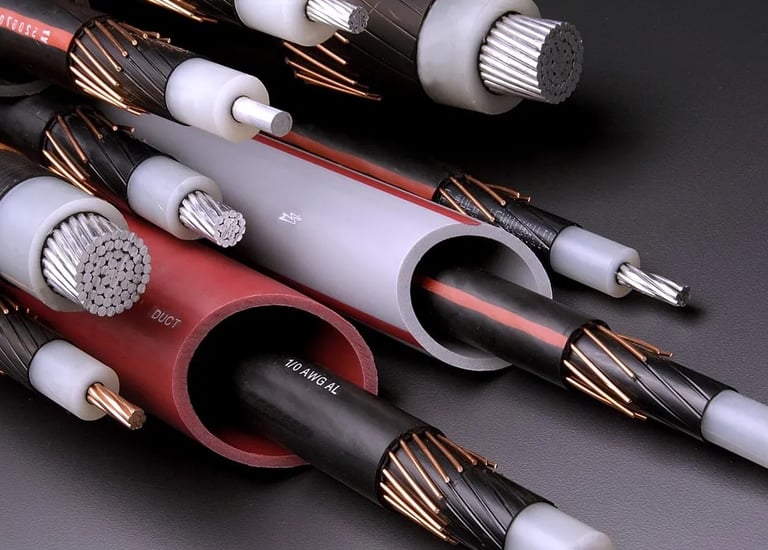

What is Low Voltage (LV)?
Low voltage systems operate at voltages up to 1,000V AC or 1,500V DC, as defined by IEC 60364 and NEC standards. This classification encompasses the majority of everyday electrical applications, from residential power distribution to specialised industrial control systems.
In residential and commercial settings, low voltage systems typically operate at 230V single-phase or 400V three-phase configurations. These voltages provide adequate power for lighting, small appliances, and general-purpose equipment whilst maintaining inherent safety through reduced shock hazard potential.
Port crane applications extensively utilise low voltage systems for auxiliary functions and control circuits. Festoon systems that supply power to travelling cranes commonly employ low voltage cables, particularly for lighting, sensors, and communication systems. Rubber tyred gantry cranes (RTGs) rely heavily on low voltage control systems for precise positioning and load management functions.
The flexibility requirements of mobile port equipment drive the selection of specialised low voltage cables. PUR (polyurethane) sheathed cables rated at 0.6/1kV have become the standard for Australian container terminals due to their superior flexibility, abrasion resistance, and ability to withstand repeated bending cycles inherent in reeling applications.
Australian Port Relevance: Low voltage cables like 0.6/1kV PUR reeling cables are extensively deployed in container cranes and spreader systems where flexible mobile connections are essential. These cables must endure constant flexing whilst maintaining electrical integrity under harsh marine conditions including salt spray exposure and extreme temperature variations.
Control system applications in RTGs predominantly utilise low voltage circuits for servo drives, position feedback systems, and safety interlocks. The 24V DC control voltage has become standard for crane automation systems, providing safe operation for personnel working in close proximity to mobile equipment.
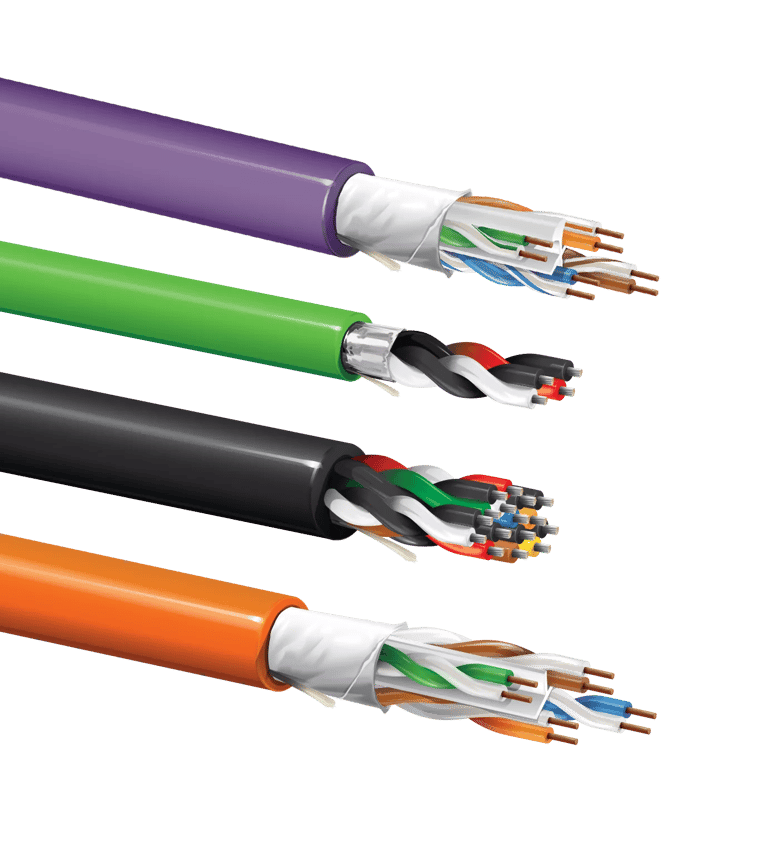

What is Medium Voltage (MV)?
Medium voltage classification covers systems operating between 1,000V AC and 35,000V AC, as established by IEC 60038 and IEEE standards. This voltage range serves as the workhorse for industrial power distribution and represents the optimal balance between power transmission capability and equipment complexity.
Medium voltage systems excel in applications requiring substantial power transmission over moderate distances whilst maintaining reasonable cable sizes and installation costs. The reduced current requirements at medium voltage levels result in lower conductor cross-sections and reduced power losses compared to equivalent low voltage systems.
Local power distribution at port substations commonly employs medium voltage networks to supply major equipment such as ship-to-shore cranes, mobile harbour cranes, and bulk material handling systems. The voltage levels typically range from 3.3kV to 11kV, depending on load requirements and distribution distances.
Large electric motors and variable frequency drives powering conveyor systems, ship loaders, and crane hoisting mechanisms operate predominantly on medium voltage supplies. This approach reduces starting current impacts on the supply network whilst providing adequate torque characteristics for heavy-duty applications.
Australian Port Relevance: Medium voltage systems are fundamental to Australian port operations, with 3.3kV and 6.6kV representing the most common voltage ratings. These systems are widely implemented in monospiral reeling configurations designed for high-speed operations up to 200 metres per minute, essential for maintaining productivity in container terminals.
Ship-to-shore cranes typically employ 6.6kV supply systems due to their high power requirements for hoisting, trolley travel, and gantry movements. The selection of 6.6kV provides optimal balance between power transmission capability and cable management complexity in the constrained spaces of crane structures.
Bulk material handling equipment, including reclaimers and stackers common in coal and iron ore terminals, predominantly operates on 6.6kV systems. These applications demand high reliability and continuous operation, making medium voltage the preferred choice for primary power distribution.
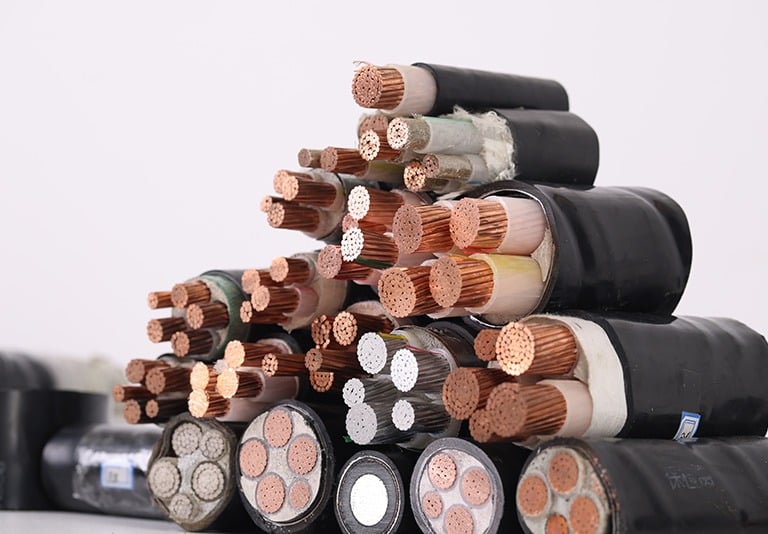

What is High Voltage (HV)?
High voltage systems operate between 35kV and 230kV AC, as defined by IEC 60071 and IEEE 1313.1 standards. These systems primarily serve bulk power transfer applications and form the backbone of regional electrical distribution networks.
The high voltage classification encompasses transmission voltages commonly used for interconnecting substations and supplying large industrial facilities. At these voltage levels, power transmission efficiency reaches optimal levels for long-distance applications, with transmission losses minimised through reduced current requirements.
Bulk power transfer applications utilise high voltage systems to efficiently transport electrical energy from generation sources to distribution points. The economies of scale achieved at high voltage levels make them ideal for supplying large industrial complexes and major infrastructure projects.
Port electrical infrastructure connection to the national grid typically occurs at high voltage levels, ensuring adequate capacity for peak demand periods whilst maintaining supply security. These connections provide the foundation for reliable port operations during critical loading and unloading activities.
Australian Port Relevance: Whilst high voltage systems aren't directly employed in crane cable applications, HV feeders operating at 66kV are standard in bulk material handling terminals throughout Australia. Coal export terminals in Queensland and iron ore facilities in Western Australia rely on 66kV infrastructure to supply major conveyor systems and ship loading equipment.
The connection between national grid infrastructure and port facilities typically occurs at high voltage levels, with subsequent transformation to medium and low voltage levels for equipment supply. This approach ensures adequate capacity for expanding port operations whilst maintaining grid stability.
Internal substation interconnects within large port complexes may employ high voltage cables for bulk power transfer between major load centres. This configuration provides operational flexibility and maintains supply security during maintenance activities or equipment failures.
What is Extra High Voltage (EHV)?
Extra high voltage systems operate above 230kV AC, representing the highest voltage classification for power transmission applications. These systems are governed by IEC 60071 and CIGRÉ guidelines, reflecting their critical role in national and international power networks.
Ultra-long-distance power transmission relies exclusively on extra high voltage systems to achieve economic viability. The extremely low transmission losses at EHV levels enable efficient power transfer across continental distances, supporting large-scale renewable energy integration and regional power trading.
Port-wide grid interconnection at major facilities may employ extra high voltage systems to ensure adequate capacity for future expansion whilst maintaining supply diversity. These connections typically involve multiple circuits to provide redundancy and operational flexibility.
Energy backbone systems for metropolitan coastal areas increasingly rely on extra high voltage transmission to support growing electricity demand from port facilities, industrial developments, and urban expansion. The concentration of major ports in coastal metropolitan areas creates significant electrical load density requiring EHV infrastructure.
Australian Port Relevance: Extra high voltage systems serve critical grid-to-port substation connections in major harbours including Melbourne, Brisbane, Sydney, and Fremantle. These facilities typically employ 275kV or 330kV infrastructure to support the substantial electrical loads associated with modern container terminals and bulk material handling facilities.
The integration of renewable energy sources, particularly large-scale solar installations at port facilities, increasingly requires extra high voltage connections to efficiently export excess generation to the national grid. This trend supports port sustainability objectives whilst providing additional revenue streams.
Metropolitan port developments rely on extra high voltage infrastructure to support not only port operations but also associated industrial activities including cold storage facilities, container manufacturing, and logistics centres that cluster around major ports.
Voltage Classification Summary
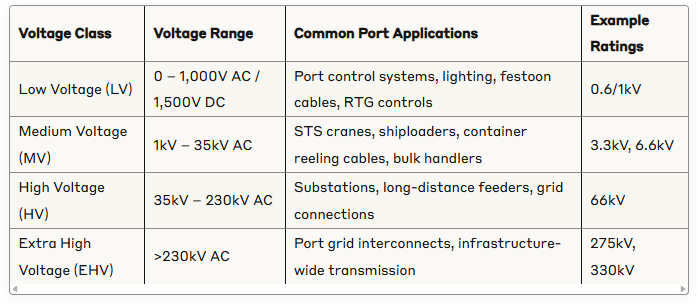

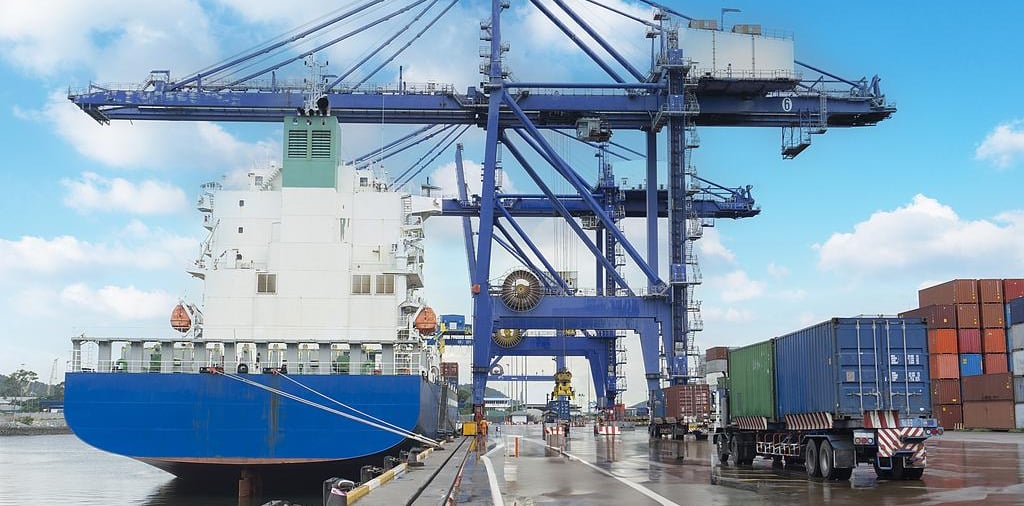

Australian Port Crane Cable Voltage Standards
Australian port facilities have standardised on specific voltage ratings that reflect both operational requirements and local regulatory compliance. The 0.6/1kV rating serves flexible rubber cables in festoon systems and small motor drives, providing adequate voltage rating whilst maintaining flexibility for mobile applications.
Legacy crane installations commonly employ 3.3kV systems, particularly in moderate-speed applications where power requirements don't justify higher voltage levels. These systems remain viable for retrofit applications and continue to provide reliable service in many Australian ports.
The 6.6kV voltage level has emerged as the preferred standard for high-performance STS cranes, reclaimers, and shiploaders due to optimal balance between power transmission capability and equipment costs. This voltage level supports the high-speed, high-capacity operations essential for maintaining port productivity.
Standards compliance ensures compatibility with national electrical regulations and international best practices. AS/NZS 5000.1 governs low voltage installations, whilst AS/NZS 1429.1 provides requirements for medium voltage systems. These standards incorporate specific provisions for marine environments and mobile equipment applications.
Long-tail keywords integration: AS/NZS compliant port cable voltage specifications ensure marine-grade MV cable installations meet Australian regulatory requirements whilst providing optimal performance in demanding port environments.
Cable certification processes verify compliance with voltage ratings and environmental performance requirements, including salt spray resistance, UV stability, and mechanical durability under continuous flexing conditions.
How Voltage Classification Affects Port Cable Selection
Voltage classification directly influences cable design parameters including insulation thickness, conductor sizing, and protective measures. Higher voltage applications require increased insulation thickness to prevent breakdown, subsequently affecting cable diameter and flexibility characteristics.
Bending radius requirements increase proportionally with voltage levels due to insulation thickness and stress concentration effects. Port crane applications demand careful consideration of minimum bending radius to prevent cable damage during reeling operations, particularly critical for high-speed crane movements.
Cable armour specifications vary significantly between voltage classifications, with higher voltages typically requiring enhanced mechanical protection. Steel wire armour provides excellent mechanical protection but reduces flexibility, whilst steel tape armour offers improved flexibility at the expense of mechanical strength.
Considerations for travel speed, tension, and mechanical load become increasingly critical at higher voltages due to the larger cable dimensions and increased weight. Reeling systems must accommodate these factors whilst maintaining electrical integrity throughout the operational envelope.
Common cable types employed in Australian ports include PUR-sheathed flexible cables for mobile applications, rubber insulated cables for fixed installations, and flat festoon cables for travelling crane systems. Each type offers specific advantages depending on voltage level and application requirements.
Frequently Asked Questions
Q: What voltage level should I specify for a new container crane installation? A: Modern container cranes typically employ 6.6kV systems for optimal power transmission efficiency and operational flexibility. This voltage level provides adequate capacity for high-speed operations whilst maintaining reasonable cable sizes and installation costs.
Q: Can I retrofit a 3.3kV crane system to 6.6kV operation? A: Retrofitting typically requires complete electrical system replacement including transformers, switchgear, cables, and motor drives. The cost-benefit analysis should consider improved operational capability against retrofit expenses and downtime requirements.
Q: What standards apply to port crane cable installations in Australia? A: Australian installations must comply with AS/NZS 5000.1 for low voltage systems and AS/NZS 1429.1 for medium voltage applications. Additional marine environment considerations may apply depending on specific port conditions.
Q: How do voltage classifications affect cable maintenance requirements? A: Higher voltage cables require more sophisticated testing equipment and qualified personnel for maintenance activities. Regular insulation resistance testing and partial discharge monitoring become essential for medium voltage applications.
Conclusion
Correct voltage classification represents a fundamental requirement for successful electrical system design and operation in port environments. The selection between low voltage vs medium voltage cables significantly impacts system performance, safety margins, and long-term operational costs.
For port crane applications, choosing the appropriate voltage level—whether 0.6/1kV for control circuits or 6.6kV for main power systems—ensures optimal system safety and operational efficiency. This decision affects not only initial installation costs but also ongoing maintenance requirements and system reliability.
Understanding international standards alongside Australian-specific requirements proves vital for procurement and engineering teams developing port infrastructure. The unique demands of marine environments, mobile equipment, and continuous operation cycles require careful consideration of voltage classification principles combined with practical application experience.
The evolution toward higher productivity port operations continues to drive voltage level selections, with 6.6kV medium voltage systems becoming increasingly prevalent for major equipment installations. This trend reflects the optimal balance between power transmission efficiency and equipment complexity for modern port applications.
How to Reach Us
Get in Touch
SiteMap
Product Catalogue
Reeling Cable
Festoon Cable
Shore Power Cable
Hybrid Cable


Copyright © 2025 Feichun Australia. All rights reserved.
